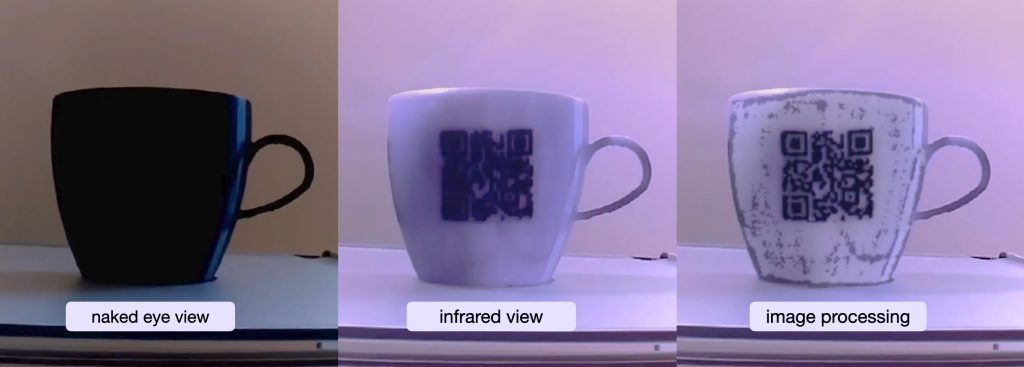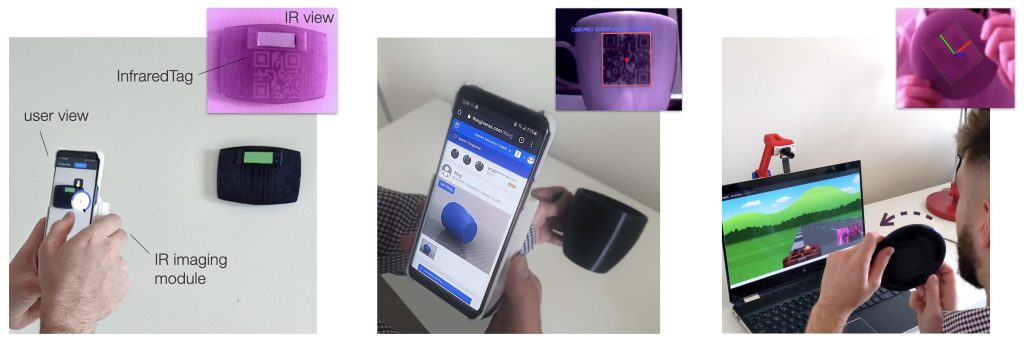Insiders and analysts predict the 3D printing trends to watch in our latest series of articles focused on the future of 3D printing.
Researchers from the Massachusetts Institute of Technology (MIT) have developed a new method of invisibly embedding information into physical objects using 3D printing technology.
The concept is named ‘InfraredTags’ and it’s all about embedding IR-readable barcodes and QR codes within the interiors of 3D printed parts. Visible only to dedicated IR sensors, these tags are designed to be invisible to the naked eye, allowing users to ‘attach’ metadata to physical parts in an unobtrusive manner. The embedded tags are also far more durable than standard barcodes or stickers, which may be removed or become unreadable over time.
“InfraredTags is a really clever, useful, and accessible approach to embedding information into objects,” said Fraser Anderson, a Senior Principal Research Scientist at the Autodesk Technology Centre in Toronto. “I can easily imagine a future where you can point a standard camera at any object and it would give you information about that object—where it was manufactured, the materials used, or repair instructions—and you wouldn’t even have to search for a barcode.”

Metadata in the physical world
Today’s technology allows us to attach all manner of metadata to our digital media. When you download a digital photo, it often comes with timestamps and a location tag. Similarly, when you download a piece of music, the sound file might come with the name of the song, the artist, and the year it was released. Mustafa Doga Dogan, a 4th year PhD student at MIT, wanted to figure out a way to also attach metadata to physical objects in the real world.
The InfraredTags concept started coming to fruition in late 2020 when Dogan heard of a new smartphone that was equipped with an IR camera. IR light, much like visible light or UV, is just a specific wavelength range on the electromagnetic spectrum. It’s a wavelength that the human eye can’t perceive and it can pass through certain materials that are opaque to visible light.
Leveraging the unique optical properties of IR, Dogan and his colleagues at MIT’s Computer Science and Artificial Intelligence Lab (CSAIL) commenced work on InfraredTags.
Embedding InfraredTags in 3D printed parts
To kick the project off, the MIT team first had to find a suitable 3D printing filament for the job. They eventually settled on a special PLA offering developed by 3DK.Berlin, a small German company. They tested the material using a spectrophotometer and found that it did indeed block visible light while allowing IR light to pass through.
The next step was to fine-tune the process of embedding the tags using a 3D printer. For this, they actually employed the use of a second filament: one that didn’t allow IR to transmit through it. By 3D printing one filament on top of the other to create a contrast, they were able to inscribe ‘invisible’ barcodes and QR codes on the exteriors of parts, since the human eye just sees it all as one solid black surface.
Dogan’s team even created a complementary software user interface that specifies how and where the tags should be 3D printed on a particular part. It’s also possible to embed multiple tags in an object to ensure scannability at all times, even if certain sides or angles are obstructed.
The MIT researchers have since integrated InfraredTags in a number of 3D printed prototypes such as a mug, a Wi-Fi router casing that reveals the network name and password, and a wheel that can be used to control a car in a racing game. If the technology becomes more widespread, they can also see people using their phones to turn lights on and off, controlling electronics such as speakers, or regulating smart home devices such as thermostats.
The paper is titled “InfraredTags: Embedding Invisible AR Markers and Barcodes into Objects Using Low-Cost Infrared-Based 3D Printing and Imaging Tools”.

Over the years, MIT has been home to several 3D printing innovations. Just recently, researchers from the university developed a new method of 3D printing objects that can sense user interaction. The novelty is that the objects are 3D printed from a single piece of material (or metamaterial, more precisely), with electrode sensors integrated into the material structure itself. As such, the printed structures are able to detect various changes in state, including applied forces and rotations.
MIT engineers also recently developed a machine learning (ML) algorithm with the potential to expedite the process of identifying 3D printable materials. Packaged within their ‘AutoOED’ software, the team’s optimization algorithm is capable of automatically identifying viable printing materials with desired qualities such as toughness, rigidity, or compressive strength.
Subscribe to the 3D Printing Industry newsletter for the latest news in additive manufacturing. You can also stay connected by following us on Twitter, liking us on Facebook, and tuning into the 3D Printing Industry YouTube Channel.
Looking for a career in additive manufacturing? Visit 3D Printing Jobs for a selection of roles in the industry.
Featured image shows three 3D printed InfraredTags prototypes. Image via MIT.



